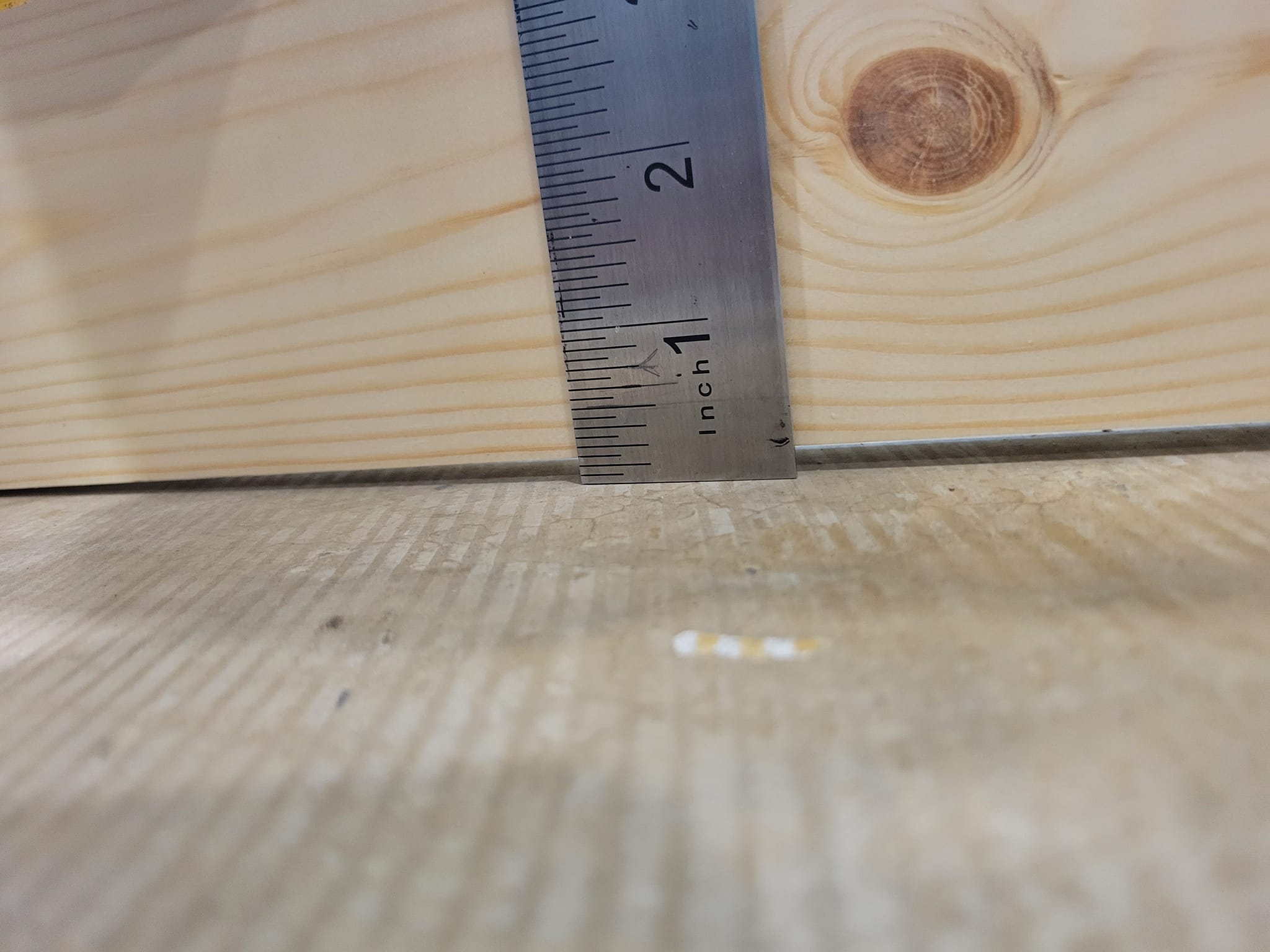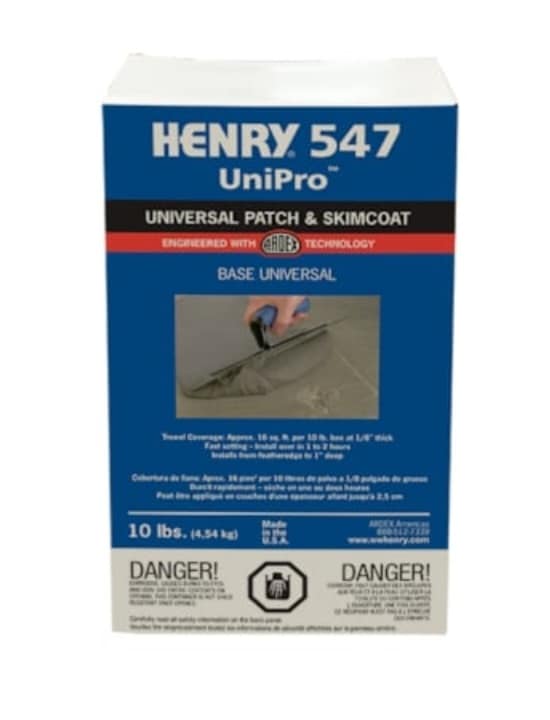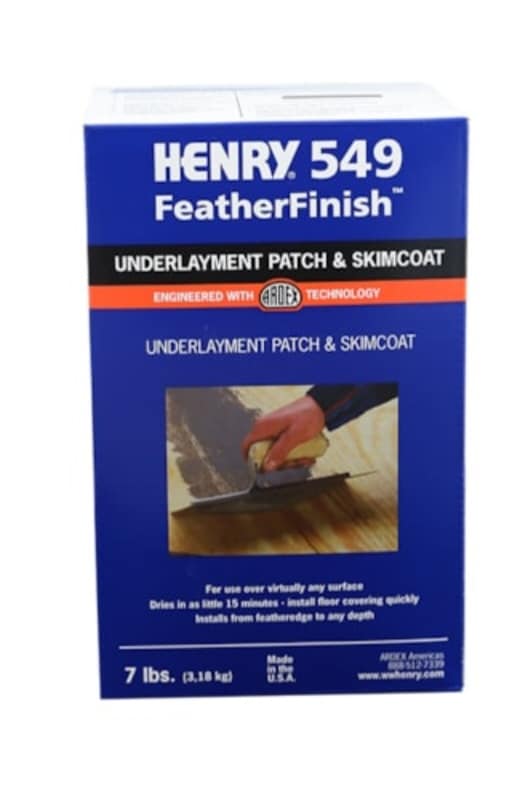Can anyone recommend the best way to patch low spots on a concrete slab for a floating floor without self-leveling the entire area?
11 months ago
Last Updated: July 26, 2024
I’m in the process of putting a floating floor over a concrete slab, but I’ve noticed a few low spots that need some attention first. They’re each about 4 square feet and less than a quarter-inch too low. I don’t want to go through the trouble of self-leveling the entire area, so I’m looking to just patch up those spots.
I’m trying to figure out the best way to tackle this. I found two Henry products that seem pretty similar, but one is way more expensive for a smaller quantity. I don’t mind spending the money if it’s worth it, but after reading all the specs, I can’t seem to figure out the difference between the two.
Has anyone else dealt with a similar project and have any advice to share?



Consider using bubble wrap underlayment to fill in any small gaps. Be sure to check the material for level tolerance before purchasing. Even if the plank already has underlayment, it’s still a good idea to add an extra layer for thickness.
Just so you know, adding underlayment can void the warranty on many cushioned products. It’s something to keep in mind before installation. This tip comes from ez.
I think it should be fine to just install the floor without worrying too much. As long as you’re using quality flooring, it shouldn’t be a problem. I hope this advice brings you good luck!
It should be fine to simply lay the vinyl floor – it will flow with the subfloor unless there’s a significant dip in one spot. An 1/8 of an inch here and there likely won’t be noticeable, except to you, since you’re aware it’s there
Options for different thickness application. Feather coat recommended for thinner fills. Self-leveling product for 1/4 inch and below. Priming is usually required. Minimal fill needed for 1/8 inch or less, except at base. Shoe usage may require additional fill.
Oh, they both claim up to 1/2 inch in a single application and neither one needs a primer. They really do seem to have the same specifications. 🤷♀️ To be honest, I installed about 15 rows of flooring and noticed a slight bounce in that area. So I removed it and now I need to fix it. I suspect it might be due to two dips in that section, with a high point in the middle, but the high point seems to be at the same level as the sides of the room, so there’s no need for grinding. I just purchased a longer straight edge to double-check that though.
Came across a pretty detailed comparison, if you’re anything like me and need to know the answer as soon as the question is posed. 😅
https://www.builditfine.com/henry-549-vs-547/
It’s great that you’re putting in the effort to research 😜
I do the same when it pertains to myself/my friends and my work…. I was certain in my previous post, just not for this specific product line. They all share some common characteristics
I gain a lot of knowledge simply by reading about other people’s issues and solutions. 😅 Chances are, I’ll encounter those same issues at some point in the future. 🙃
Feather finish provides a more polished appearance
I’d definitely opt for that
Simpler to use
While it’s in the process of drying, grab a wet sponge to achieve a flawless finish
In my opinion, if you don’t do it, you’ll regret it later…
I definitely agree. We had glue-down flooring in our previous house and bubbles appeared over time, which we had to fix by drilling holes and adding more glue. I definitely don’t want a repeat of that.
I’ve installed a few floating floors before, and a small gap like that won’t make a difference. If you’re concerned about those areas, just double or triple the foam underlayment there.
Henry level pro is the self-leveling product they recommend, not the ones that were mentioned. ‘t pay attention to anyone who advises against using it – it’s a simple way to ensure your flooring is successful.
Hey there, I’ve checked out their self-leveling products, but I’ve heard mixed things about using them for small patches. I was thinking of just filling in the low areas with a trowel for more control. That’s why I was considering these two options.
Usually, the allowance is 3/16” over 10 feet when pouring a slab. But if I were to do it again, I’d pour the entire slab.
I recently finished the floor in my house using feather finish and it turned out great! Make sure to follow the instructions and have everything prepared before mixing because it dries quickly. It was simple to apply and dried smoothly. I was able to lay the floor within an hour!
Before installing over concrete, make sure to review the warranty guidelines from the flooring manufacturer to ensure you are protected
Smooth out the surface with a feather finish
Feather Finish was used. Mix small amounts at a time due to quick drying.